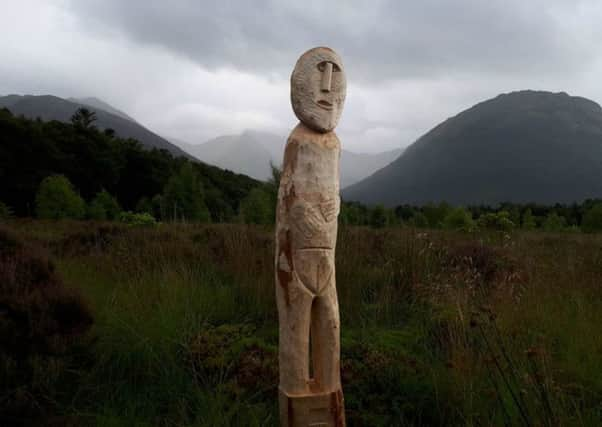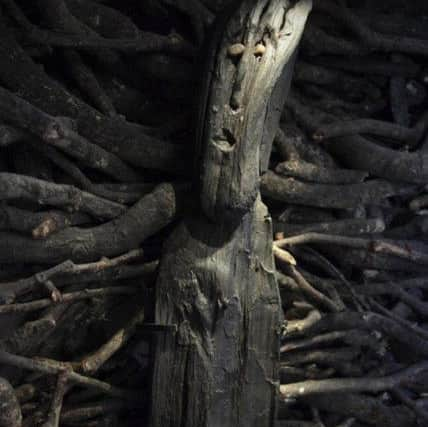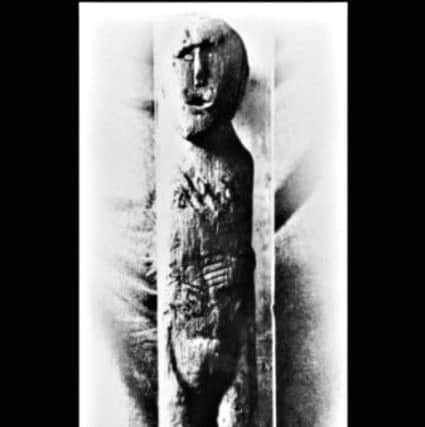The 'return' of the 2,500-year-old Ballachulish Goddess


The life-size carving, which dates to around 600BC, was discovered face down in Highland peat by workmen in 1880.
A team from University College Cork travelled to Lochaber earlier this month to recreate the figure as part of their research into prehistoric creativity.


Advertisement
Hide AdAdvertisement
Hide AdThe new goddess, carved from birch with Iron Age tools, was then placed to overlook Loch Leven close to the peat bog where she was found.
Some believe she was originally worshipped by sailors to insure safe passage over the water.
Dr Benjamin Gearey, archaeology lecturer at UCC, said: “The Ballachulish Goddess is something that has haunted me for many years. She is a very evocative character.
“There seems to be a tradition across Europe in carving this type of figure, but the Ballachulish Goddess is quite exceptional.”


Advertisement
Hide AdAdvertisement
Hide AdThe original goddess is held by the National Museums of Scotland but its conservation in the late 19th Century was something of a nightmare.
The figure dried out after those charged with her transportation from Lochaber could not find a container big enough to hold her in water.
She began to warp, with parts of her legs then falling off after she arrived in Edinburgh.


Dr Gearey, who has a special interest in woodwork found in wetland areas, where the material is naturally preserved, added: “What is interesting about the goddess is that what you see in the museum is very different to what she looked like.”
Advertisement
Hide AdAdvertisement
Hide AdThe new model, made by woodworker Mark Griffiths, is based on a photograph taken shortly after she was found.
The lecturer added: “You get a slightly different sense of her. Some people see her as quite benevolent although others less so.
“The figure has been to local schools. Some felt she had a protective quality but also someone wouldn’t touch her and thought she was quite threatening.”


Dr Gearey said the story of the Ballachulish Goddess was still well known in the area.
Advertisement
Hide AdAdvertisement
Hide Ad“Most people in Ballachulish new something about her. We heard lots of different stories, including how the local railway workers refused to carry her because they thought she was a Pagan idol”
The figure was described as a pagan idol at a meeting of the Society of Antiquities of Scotland in 1881.
The meeting heard of a “curious and interesting relic” found in the Old Ballachulish moss, according to a contemporaneous report in The Scotsman.
It said: “The report is that of a nude female, as rudely modelled as it is almost possible to conceive, but at the same time presenting a distinctly recognisable imitation of the human form.”
Advertisement
Hide AdAdvertisement
Hide AdThe report added: “The head has a rounded protuberance which has been suggested to be the hair gathered into a top knot, the face is somewhat flattened, the nose partly obliterated and the eyes made by the insertion of quartz pebbles to represent eye balls.
“Nothing akin to his remarkable image has hitherto been known either in Scotland or Ireland.”
Similar objects had been found in Holderness in Yorkshire, and parts of the Continent - but nothing of the scale of the Ballachulish find, the meeting heard.
Early photographs shows the figure with a container which appears to hold a number of pointed objects. According to NMS, she is also holding something that looks like a “man’s private parts” in each hand. When found, a number of intertwined branches and twigs surrounded the figure which suggests she may have been held in a wickerwork container - or was surrounded by a shrine.
Advertisement
Hide AdAdvertisement
Hide AdThe new goddess has now been buried in a similar way 20 to 30 metres away from the spot where she was found.
It is planned to excavate the figure sometime next year to determine how the carving has been affected by the wet conditions.
The project has been funded by World Wood Day.
